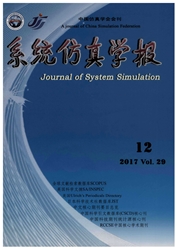

 中文摘要:
中文摘要:
提出V-BLAST(Vertical Bell Labs Layered Space—nme)系统的一种新的联合检测算法,先通过迫零(ZF)或最小均方误差(MMSE)算法初步检测,粗判决得到包含nr层信号的初始解向量,然后在信号解空间中找到与初始解有最小错误距离的月,个解向量,最后用最大似然(ML)算法从这nr+1个解向量中找出最优解。以QPSK调制方式为例,计算机仿真验证了在准静态平坦衰落信道中新算法的检测性能,与ZF和MMSE算法比较,该算法能明显提高系统性能,在4×4的MIMO系统中,当误码率在10^-2数量级时可以获得6dB左右的增益,而且新算法比ML算法的复杂度低很多。
 英文摘要:
英文摘要:
A new joint detection algorithm was proposed for V-BLAST (Vertical Bell Labs Layered Space-Time) System. In detail, zero forcing (ZF) or minimum mean square error (MMSE) algorithm was applied to preliminary detection. And then coarse judgment prevailed to acquire initial solution vectors containing nT layers of signals and found out nTSolution vectors featuring the shortest error distance with these initial solutions in the signal solution space and finally picked up the optimal solution amongst nr+l solution vectors based on maximum likelihood (ML). Taking QPSK modulation system as an example, computer simulation verified detection performance of the new algorithm in quasi-static flat fading channel. Comparing with ZF and MMSE algorithm, the algorithm remarkably improved system performance. In 4×4 MIMO system, the algorithm is capable of obtaining gain of about 6dB at error rate of 10^-2 order of magnitude with notably lower complexity compared with ML algorithm.
 同期刊论文项目
同期刊论文项目
 同项目期刊论文
同项目期刊论文
 Decoupled 2D direction of arrival estimation using compact uniform circular arrays in the presence o
Decoupled 2D direction of arrival estimation using compact uniform circular arrays in the presence o 期刊信息
期刊信息
